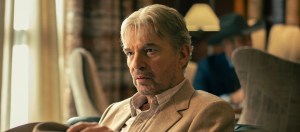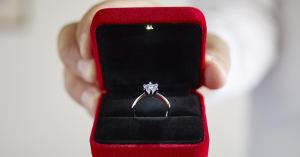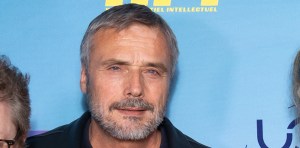Warning: This article contains massive Blade Runner 2049 Spoilers!
Blade Runner 2049 adds a long-awaited new chapter to Ridley Scott’s cult-classic 1982 sci-fi movie, which explored a future in which artificial humanoids called Replicants are used as a labor force within a future dystopian Los Angeles.
Videos by PopCulture.com
The sequel jumps from the 2020s era of the original to the year 2049, in which a Blade Runner named “K” (Ryan Gosling) is tasked with hunting down and eliminating replicant models form the original film’s era. That dark task becomes a noble quest when “K” discovers that an old replicant actually gave birth to a baby – a discovery that could “break the world,” as K’s supervisor lieutenant Joshi (Robin Wright) puts it.
K’s investigation leads him to the replicant baby’s father, Deckard (Harrison Ford), which shines light on decades of secrets that Deckard wanted to keep buried, and sets the Wallace corporation on a deadly a mission to silence anyone who knows about the replicants’ ability to reproduce.
However, some viewers may walk away from Blade Runner 2049 still feeling confused about the mystery that K eventually solves. Here’s Blade Runner 2049‘s Ending and original movie connections, explained.

The Golden Child
The principal lead in K’s investigation turns out to be his own memory of childhood, which should be impossible because K is actually a replicant, and never actually lived that childhood. The principal catalyst for K’s memory dilemma is a wooden horse carving with the date 6-10-21 inscribed on it: a birthdate.
In K’s memory, he hid the horse carving in the furnace area of the orphanage he supposedly spent time at as a kid. When he finds the horse still in its hiding place, that all but confirms his memory is a real one, and not an implant.
What K comes to believe is that he is the prodigal child in the conflict between humans and replicants – a replicant who was born like a human baby, thereby proving that artificial life forms are even more “human” than anyone ever guessed. In fact, we learn that, with the ability to reproduce, replicants could arguably sit higher on the evolutionary scale than normal humans.

It’s that reality that lieutenant Joshi is terrified by, as she knows the revelation would threaten humanity’s place in the world, and lead to an all-out war with the replicants that would replace them, which is why she wants the child killed.
For Niander Wallace (Jared Leto) and his prize replicant assistant Luv (Sylvia Hoeks), this chose one represents the key to the future of replicant production. Wallace accepts the hierarchy of the world (part of his god complex), and wants to create a much larger race of replicants. The best way he sees to do that, is to follow K’s investigation until the Blade Runner locates the replicant child, and then take the child for dissection, to learn how it was born.
As Wallace suggests to Deckard late in the film, Deckard’s romance with Rachel (Sean Young) in the first film may have been part their respective programming as replicants, in order to reach this desired conclusion.
Who Is The Chosen One?

As stated, K’s investigation is motivated by the belief that he is in fact replicant child everyone is searching for, due to his memory of the wooden horse carving he hid as a child. In the middle of the film, K visits the Stelline Institute where he meets Dr. Ana Stelline, a replicant memory-maker.
Stelline is considered the best in her field, due to the fact that she’s locked in a sterile cell, and only relies on imagination as her only escape. Stelline confirms that K’s childhood memory is a real and valid one – though this turns out to be major bit of misdirection the film throws in to lead viewers away from the truth.
In the final act of the film, K is approached by his escort acquaintance Mariette (Mackenzie Davis), who reveals she’s part of an underground cell of replicants who are ready for revolution. It’s there that K meets Freysa (Hiam Abbass), who delivered the replicant daughter of Deckard and Rachel (the latter died in childbirth) and helped hide her. Upon learning that he is not the chosen one, K finally puts the pieces together to realize that Dr. Stelline is actually Deckard’s daughter, the replicant child that can change the world.
Freysa reveals that she worked with members of her cell like Deckard and Sapper Morton (Dave Bautista) to cover records and hide the child within the system, under her pursuers’ very noses. When the child was revealed to have sever immune system issues she was sequestered in her bubble, where she ironically crafted her own life experiences into character-defining memories of replicants like K.

In the end, K brings Deckard to the Stelline Institute to finally meet his estranged daughter. It’s implied by Freysa that the memories Stelline shared have helped replicants like K get woke, leading them to the brink of a new revolution. For K, the ending of the story is bittersweet: the Blade Runner is severely wounded in his battle with Luv, and it’s left open-ended as to whether or not he will die on the steps of the Stelline Institute. Either way, K finds meaning to his life as a replicant, and a cause worth dying for. As far as existence goes, his is as real as any human’s.
Blade Runner 2049 is now playing in theaters.








